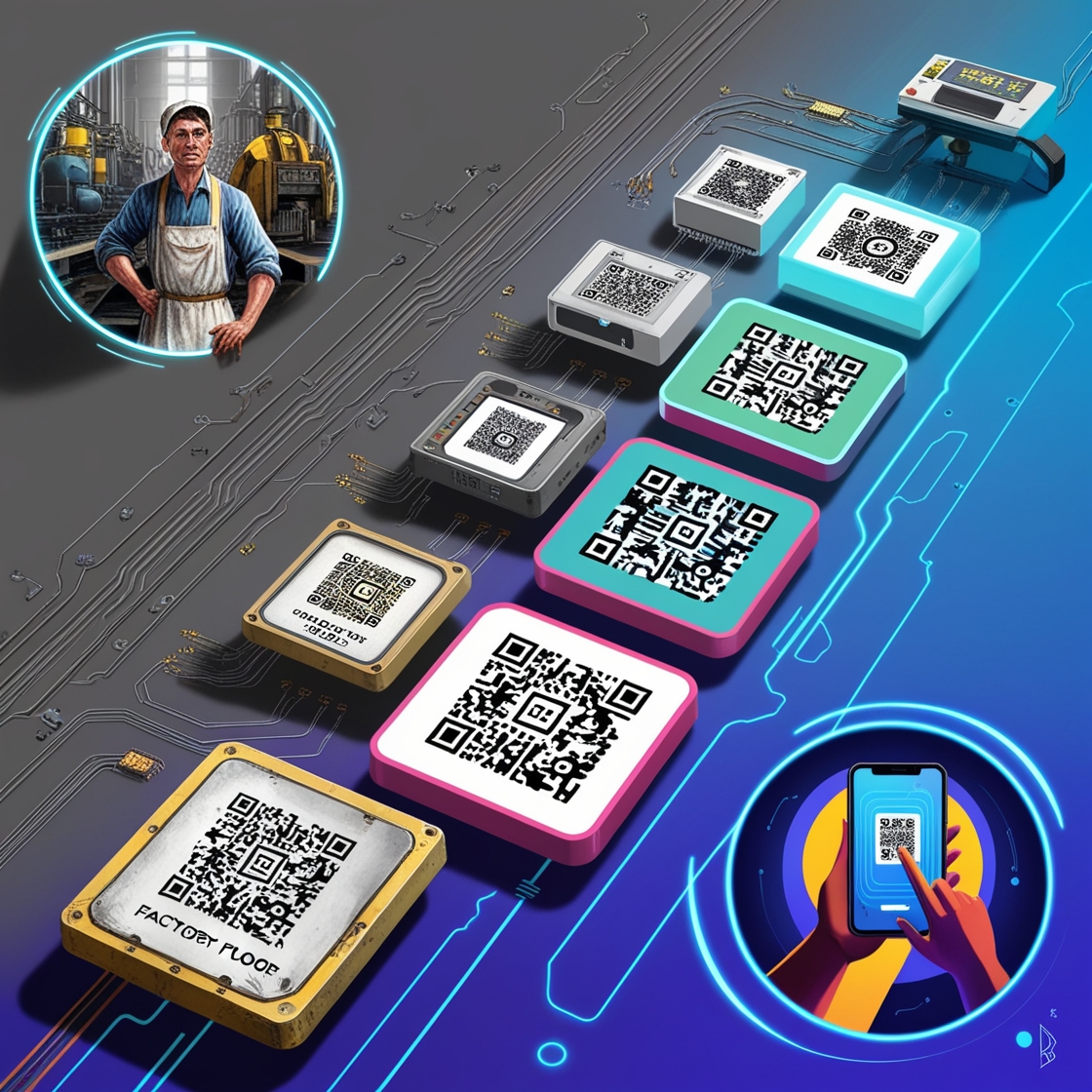
The Evolution of QR Codes: From Factory Floors to the Digital Age
Created on 25 August, 2024 • 1,106 views • 4 minutes read
In the vast landscape of digital innovation, few technologies have had as versatile and enduring an impact as the QR code. While often seen as a modern tool for mobile payments and digital marketing, the QR code’s origins are rooted in a very different con
The Evolution of QR Codes: From Factory Floors to the Digital Age
In the vast landscape of digital innovation, few technologies have had as versatile and enduring an impact as the QR code. While often seen as a modern tool for mobile payments and digital marketing, the QR code’s origins are rooted in a very different context—a solution to an industrial challenge that evolved far beyond its original purpose.
Industrial Beginnings: A Solution to a Complex Problem
The story of the QR code begins in 1994, in the heart of Japan's booming automotive industry. Denso Wave, a subsidiary of the Toyota Group, was faced with a logistical challenge. The automotive production process required tracking a vast array of components, but traditional barcodes, which were linear and could only hold a limited amount of information, were proving inadequate. Masahiro Hara, an engineer at Denso Wave, was assigned the task of developing a new system that could handle the complexity of modern manufacturing.
Hara and his team sought to create a code that could store more data, be read at high speed, and scanned from any direction. Drawing inspiration from the game of Go, which uses black and white stones on a grid, they developed the two-dimensional QR code. Unlike linear barcodes, the QR code could hold information both horizontally and vertically, enabling it to store up to 7,000 digits—hundreds of times more than a traditional barcode.
The name “Quick Response” was chosen to highlight the speed at which the code could be scanned, but at the time, few could have predicted how far this "quick" innovation would go.
Unexpected Versatility: QR Codes Enter the Consumer Market
Initially, QR codes were confined to factory floors, quietly revolutionizing inventory management and part tracking in the automotive industry. However, the turn of the millennium brought significant changes. As mobile phones with cameras became more prevalent, particularly in Japan, the potential for QR codes in the consumer space became apparent. Marketers and businesses realized that these codes could be used to seamlessly connect the physical and digital worlds, offering consumers instant access to websites, promotions, and digital content simply by scanning a code with their phones.
Japan quickly became the proving ground for QR codes outside the industrial sector. The codes began appearing on everything from business cards to billboards, creating a new way for brands to engage with consumers. What started as a tool for managing car parts had transformed into a bridge between traditional media and the emerging digital landscape.
Global Shift: The Rise of QR Codes in the 21st Century
While Japan embraced QR codes, global adoption was slower. It wasn’t until smartphones became ubiquitous that QR codes began gaining traction in other parts of the world. The rise of mobile internet and the convenience of instant access to information made QR codes appealing in new markets. China, in particular, saw an explosive rise in QR code usage. Companies like Tencent and Alibaba integrated QR codes into their payment systems, making them central to everyday transactions.
In Western countries, QR codes initially struggled to gain the same momentum. The technology was often seen as gimmicky or unnecessary, overshadowed by emerging technologies like NFC. However, QR codes never truly disappeared—they were simply waiting for the right moment to shine.
A Resurgence Driven by Crisis: The Role of the COVID-19 Pandemic
That moment came in 2020, when the COVID-19 pandemic transformed daily life around the globe. Suddenly, contactless solutions became essential. QR codes, with their ability to provide touch-free interactions, saw a dramatic resurgence. Restaurants replaced physical menus with QR codes, retailers used them for contactless payments, and health authorities employed them for contact tracing. The global crisis underscored the utility of QR codes in a way that few could have anticipated.
Innovation and the Future of QR Codes
As we look ahead, the future of QR codes seems more promising than ever. New innovations, such as dynamic QR codes that can be updated with new information without changing the original design, are expanding their functionality. Augmented reality (AR) and the Internet of Things (IoT) are also beginning to integrate QR codes, blending the physical and digital worlds in increasingly sophisticated ways.
What started as a humble solution to a manufacturing problem has become a key technology in the digital age. The QR code’s journey from factory floors to everyday life is a testament to its adaptability and enduring relevance. As we continue to explore new ways to connect and communicate, the QR code stands as a symbol of how even the simplest innovations can have a lasting impact on the world.
Conclusion
The history of the QR code is a story of evolution and adaptation. From its industrial origins to its role in today’s digital landscape, the QR code has continually found new ways to remain relevant. As technology advances, it’s likely that QR codes will continue to evolve, finding new applications and maintaining their place as a vital tool in our increasingly interconnected world.